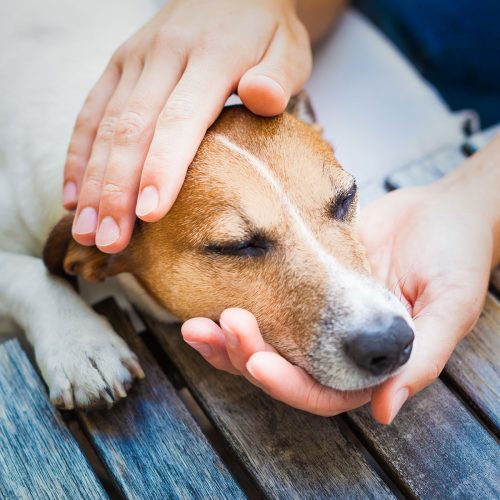If you’ve ever looked at your bird and wondered, “Why is she losing feathers? Is something wrong?” — you’re not alone. Many bird owners panic the first time they see fluff and feathers all over the cage. But in most cases, this isn’t a sign of illness—it’s a natural process called molting.
Molting is one of the most fascinating and essential parts of a bird’s life cycle. It’s like your bird pressing the reset button on its wardrobe—swapping out old, worn-out feathers for a brand-new set. But here’s the thing: molting isn’t just about feathers falling out. It affects your bird’s mood, energy, nutrition, and even their social behavior.
So, let’s dive deep into the molting mystery. Whether you’re caring for a budgie, parrot, cockatiel, or canary, this guide will help you understand every phase of molting—and how to give your feathered friend the TLC they deserve at each stage.
What Is Molting, Really?
Molting is the cyclical process where birds shed old feathers to make way for new ones. Feathers are made of keratin (like our hair and nails), and over time, they wear out due to preening, UV exposure, and general daily use. New feathers help birds stay warm, aerodynamic, and attractive for mating or socializing.
In the wild, molting usually follows the seasons, particularly after breeding or migration. In captivity, though, molting patterns can be influenced by indoor lighting, diet, temperature, and stress.
How Often Do Birds Molt?
That depends on the species, age, and environment. Here are some general guidelines:
- Budgies (Parakeets): Every 6 months, with smaller molts in between.
- Cockatiels: About once or twice a year.
- Canaries & Finches: Typically in late summer or early fall.
- Parrots: Most large parrots have a gradual molt over many months.
Some birds have a soft molt—losing just a few feathers at a time—while others go through a hard molt, losing large patches quickly.
Signs Your Bird Is Molting
Molting looks different depending on your bird’s species and molt type, but here are the most common signs:
- Feathers Everywhere: You’ll see feathers on the cage floor and maybe even in food bowls.
- Pin Feathers: These are new feathers growing in, encased in a keratin sheath. They look like little blue or white quills.
- Itchiness or Irritability: Birds often feel itchy and may be cranky or not want to be handled.
- More Preening: Preening helps birds remove sheaths from pin feathers.
- Reduced Singing or Playing: Your bird may become quieter or less active.
- Loss of Tail or Flight Feathers: This can affect balance or flying temporarily.
The 4 Stages of Molting (And How to Care for Each One)
Let’s break the molting process down into four key stages. Each phase has different needs, and understanding them helps you offer the best care possible.
Stage 1: Molt Onset – The Feather Drop Begins
This is the first sign your bird is entering a molt. You’ll notice down feathers on the cage floor and maybe a slightly ruffled appearance.
What’s Happening:
- Old feathers loosen and fall out.
- Hormonal changes occur.
- Energy levels drop as the body prepares for regrowth.
Care Tips:
- Keep stress low. Avoid travel, new pets, or major changes during this time.
- Improve diet. Start boosting your bird’s nutrition now. High-protein foods like boiled eggs, cooked quinoa, or bird-safe sprouts are excellent.
- Daily misting. A light misting with warm water can ease feather loss and soothe skin.
- Don’t bathe too often. Over-bathing can irritate sensitive skin. Two to three times per week is enough.
Stage 2: Pin Feather Growth – The Quill Phase
New feathers begin emerging as pin feathers. They may look like sharp, waxy tubes and can be sensitive to the touch.
What’s Happening:
- Feathers are growing from follicles.
- The keratin sheath protects the developing feather.
- Blood vessels nourish the new feathers—this is why they’re called “blood feathers.”
Care Tips:
- Hands-off handling. Pin feathers can hurt if touched. Your bird may be more withdrawn.
- Provide gentle perches. Avoid rough or hard perches that irritate growing feathers.
- Extra protein. Feather growth is demanding. Offer bird-safe protein sources like cooked beans or a high-quality molting formula.
- Encourage preening. Preening helps remove keratin sheaths. Some birds like a gentle head rub (if they trust you), but let them lead.
🧠 Did You Know? A single feather can take 1–3 weeks to grow fully. Imagine growing hundreds of them all at once—it’s exhausting!
Stage 3: Low Energy & Mood Shifts
This stage often overlaps with others, but it’s important to highlight. Your bird may act completely different while molting—and that’s normal.
What’s Happening:
- Molting takes up energy the bird usually uses for play, socializing, or singing.
- Hormones fluctuate.
- Immune response can dip temporarily.
Care Tips:
- Respect their space. Give your bird quiet time. Reduce handling unless invited.
- Enrichment activities. Offer gentle foraging toys or soft chewables to prevent boredom.
- Maintain a steady routine. Birds love predictability, especially when they’re vulnerable.
- Avoid breeding or training. Save new tricks and bonding for after the molt.
Stage 4: Feather Bloom – The Fluff Is Back
As pin feathers open, your bird will look fluffier, shinier, and more vibrant than ever. This is a sign the molt is ending.
What’s Happening:
- Sheaths break off and feathers unfurl.
- The immune system bounces back.
- Energy levels and mood return to normal.
Care Tips:
- Grooming support. Offer warm baths and continue light misting to loosen remaining keratin.
- Celebrate with treats! Your bird made it—some fresh fruit or a favorite toy is well-deserved.
- Monitor regrowth. All feathers should come back. If some don’t, or you see bald patches, consult an avian vet.
Bonus Tips for Supporting Your Bird Through Molting
💡 Nutrition Is Everything
Feather regrowth is 90% protein, so what you feed your bird can dramatically impact how well (and quickly) they molt. In addition to their base diet:
- Add protein: Boiled eggs (with shell), spirulina, cooked lentils, or molting-specific pellets.
- Add omega-3s: Chia seeds and flaxseed (sparingly) help improve feather quality.
- Add vitamin A: Carrots, sweet potato, and dark leafy greens aid skin and feather health.
⚠️ Avoid high-fat seeds like sunflower as a main source of nutrition. They’re too fatty and lack variety.
Watch for Abnormal Molting
Not all molting is healthy. Here’s when to be concerned:
- Feather-picking or bald patches with visible skin.
- Bleeding from blood feathers.
- Repeated molting cycles back-to-back (may signal stress or hormonal imbalance).
- No regrowth in certain areas.
In these cases, always consult a certified avian vet. A health issue like mites, malnutrition, or liver problems could be hiding behind a “normal molt.”
Final Thoughts: Be Your Bird’s Molting Ally
Molting might seem like a rough patch—your normally perky bird suddenly turning grumpy, quiet, and scruffy—but it’s also a beautiful renewal process. With the right knowledge and a little empathy, you can help your bird through the process comfortably and safely.
Think of it as birdie self-care. They’re not just shedding feathers—they’re preparing for a new season of flying, cuddling, singing, and exploring.
So stock up on those nutritious snacks, prep the misting bottle, and let your bird rest. Soon, they’ll be back to their full feathery glory—and maybe even looking better than before.



